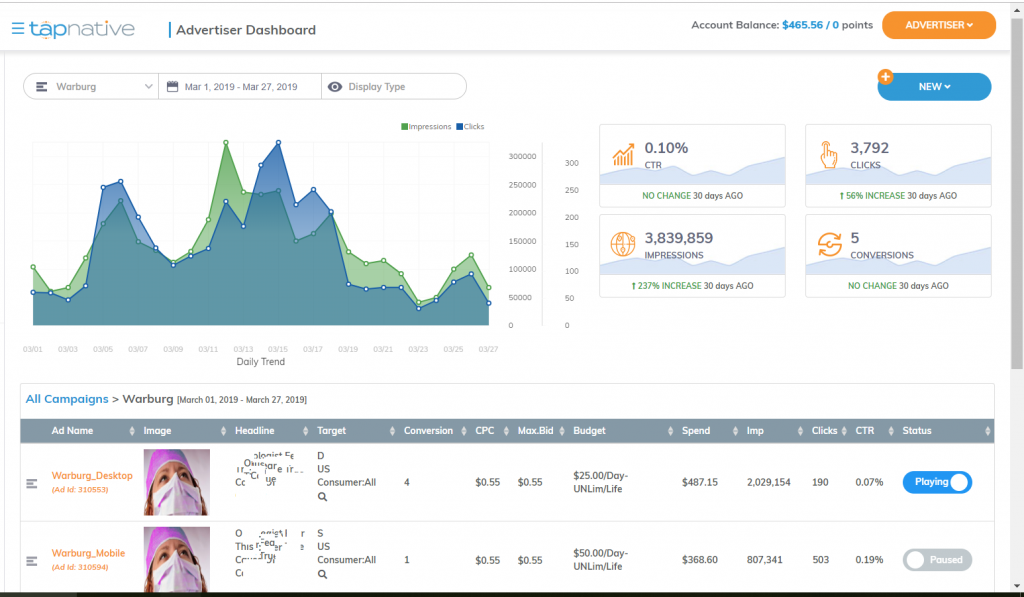It’s no secret that digital health publishers of all types struggle to introduce new users to their content. Consumer traffic exchanges and content discovery engines have historically focused on every vertical except health and medicine. You can easily find dozens of networks that focus on fashion, sports, pop culture, technology or finance, but consumer health is MIA. I recently sat down with Rafael Cosentino, VP of Business Development at Tap Native, a native ad platform, content recommendation engine, and traffic exchange focused around health and medicine.

“Health has largely been left out of consumer traffic exchanges,” says Cosentino. “Because health and medicine are complicated, because they are more regulated and health publishers have a significantly elevated sense of editorial guidelines, few if any, have pursued building traffic exchanges for health. If you’re a health publisher promoting your content on social media or traffic exchanges, you already know the signal-to-noise ratio is too high. Health is an afterthought, because you’re competing with local news, politics and pop culture. In addition, there’s no contextual relevance on typical content exchanges. Healthcare marketers and publishers also have elevated concerns about the types of content which appears adjacent to their content.”
In 2016, Cosentino conceived Tap Native with a group of digital health and AdTech veterans seeking to fill a void for healthcare publishers and marketers. In 1999, Cosentino entered the digital health space with a company called Healthscout. He then saw a series of digital health victories including when a company called Healthology, a syndicator of health video content, was sold to iVillage/NBC Universal. Advanstar Medical Economics, a publisher of 27 magazines for healthcare professionals, also adopted Cosentino’s vision and platform for online content distribution.
Cosentino continues, “Our system combines all the best elements we could imagine, including targeting for advertisers or content marketers by therapeutic category or medical specialty. It is a traffic exchange for publishers allowing them to turbocharge their visits without cost. They can also reach a 100% health-focused audience, recirculate content, and of course, have access to a first-class, health-centric monetization and analytics platform.”

Publishers can choose to receive a payment for using the ads and widgets or receive traffic reward points. Here, the value created is swept into the advertising side of their account and traffic is driven to their site from Tap Native’s heath network. Tap Native’s ad units and widgets can be found across hundreds of top tier health sites, forums, associations, medical societies, non-profits, condition specific patient portals, drug reference sites, diet and fitness sites, pharmacies, lab sites and more.
Publisher’s using Tap’s widget can choose to feature editorial and advertising or just editorial content. Advertisers include regional health systems, pharma, medical device, OTC products, ecommerce and healthy meal delivery kits. You’ll notice the vast majority of the ads are unbranded. Cosentino says unbranded ads seem to work better for brands that can transact online. For Pharma, or other brands that do not have the ability to transact online, Tap Native works with the marketer to compose personal stories which communicate the advertisers key message points. Cosentino claims what comes out is engaging and actionable content distribution which generates visits, awareness, leads, sales and other desired actions for publishers and advertisers alike. You can see more at TapNative.com.
For the sake of transparency, it’s important to note that our contributing author for this piece, Jason Mendelsohn, is a Manager of Partner Relations with eHealthcare Solutions (EHS). Tap Native is an exclusive EHS publisher partner. Additionally, it should be noted that the Pharma Marketing Network employs Tap Native technology on our site.



![6 Digital Tools at the Center of Healthcare Digitalization [INFOGRAPHIC]](http://ec2-54-175-84-28.compute-1.amazonaws.com/pharma-mkting.com/wp-content/uploads/2021/04/6DigitalTools_600px-218x150.jpg)




![6 Digital Tools at the Center of Healthcare Digitalization [INFOGRAPHIC]](http://ec2-54-175-84-28.compute-1.amazonaws.com/pharma-mkting.com/wp-content/uploads/2021/04/6DigitalTools_600px-100x70.jpg)




